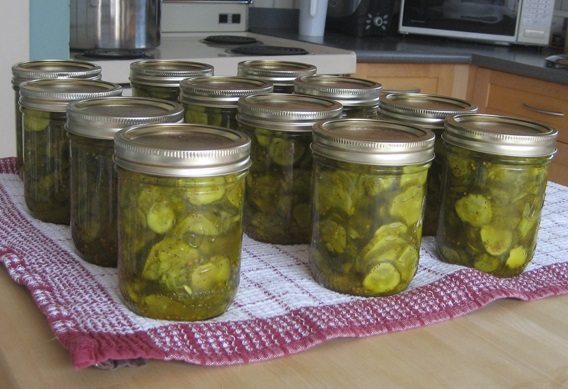Preserving Classes in Vancouver

Farmers’ markets are lovely, aren’t they? All those huge piles of gorgeous fruit and vegetables in season. But what to do when you have over-enthusiastically bought a flat of plums, and can’t possibly eat them all? Can them, of course. But how to get started preserving?
Make Some Jam
If you weren’t pressed into service at the kitchen table hulling fruit for the jam pot throughout your childhood, making jam may seem overwhelming. To be fair, those marathon food preserving days may have put you off too. However, you don’t need to make a root cellar’s worth of jam in one go.
The equipment involved is all quite affordable and simple: a package of mason jars, a canning pot (looks like a very big stock pot, with a rack inside to sit jars on), one of those tool kits, and pectin. Essentially all you are doing is mashing fruit, cooking it down, adding sugar and pectin, ladling it into jars, and boiling the jars. That’s it.
Follow the Recipe
This is one of those times you need to follow a recipe to the letter – no throwing in spices or extra anything. For your jam to set properly and have the acidity level to prevent nasty things from growing in it, recipes need to be tested by a Master Preserver. Buy books published by pectin companies, such as Pomona’s or Bernardin, or use recipes on their sites. Random blog recipes are a no no, as well as old family recipes, as we now know more about food safety and the preserving guidelines have changed.
Ferment some Veggies
If you’ve ever eaten yogurt or sauerkraut, you’ve eaten a fermented product. Even easier than making jam, fermenting involved creating a welcoming environment for friendly bacteria to flourish. Cabbage, carrots, beets, green beans – there are loads of vegetables that work well for fermenting. Though the initial process is quite easy, these foods will take longer to process – typically you have to leave your jars in a dark cupboard for two to four weeks before eating. You can use mason jars for this too, just pick up a reCAP reusable mason jar lid and a bung to make your own fermenting crock. Homesteader’s Emporium sells a ready-made sauerkraut kit that includes full instructions and pre-packaged spices for two batches.
Pickle it
Some pickles are fermented, but not all – you can make shelf-stable pickles without the fermentation. Packing vegetables in jars with a brine solution, as well as some flavourings, and then processing the jars in your canning pot will allow you to store a whole other collection of vegetables. Cucumbers are the obvious ones, but you can pickle zucchinis, beets, carrots, green beans, cabbages, onions, garlic, nuts, pumpkins, and one I particularly want to try, watermelon rind.
Take a Preserving Class
If the whole preserving process still seems impossible, take a class and see it up close. Homesteader’s Emporium, Save-on Meats, Whole Foods, and UBC Farm all offer jam-making and fermenting classes throughout the season.
There is nothing like a homemade jam or pickle as a gift when you, er, maybe forgot to buy something. So go, set up your children at the kitchen table with a pile of plums to pit. They’ll thank you later.
Erin McGann is the former Managing Editor for Vancouver Mom and Toronto Mom Now. She drinks just a bit too much coffee, is a bit obsessed about sourcing local food, plays the cello moderately well, spends too much time on Twitter, keeps honeybees on a rooftop, and has a thing for single-malt whisky. Erin is working on a novel set in turn-of-the-century Vancouver, which her husband, son and dog have to hear about all the time, and also blogs at Erin at Large.




















